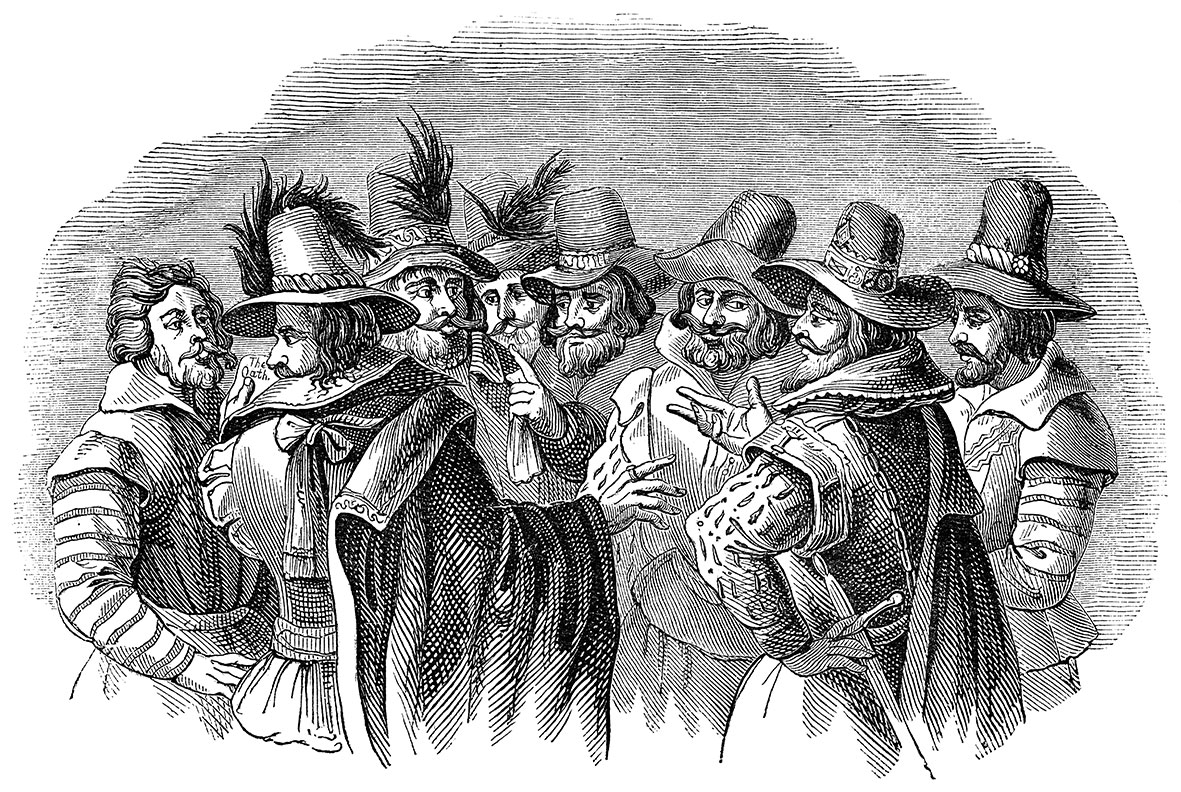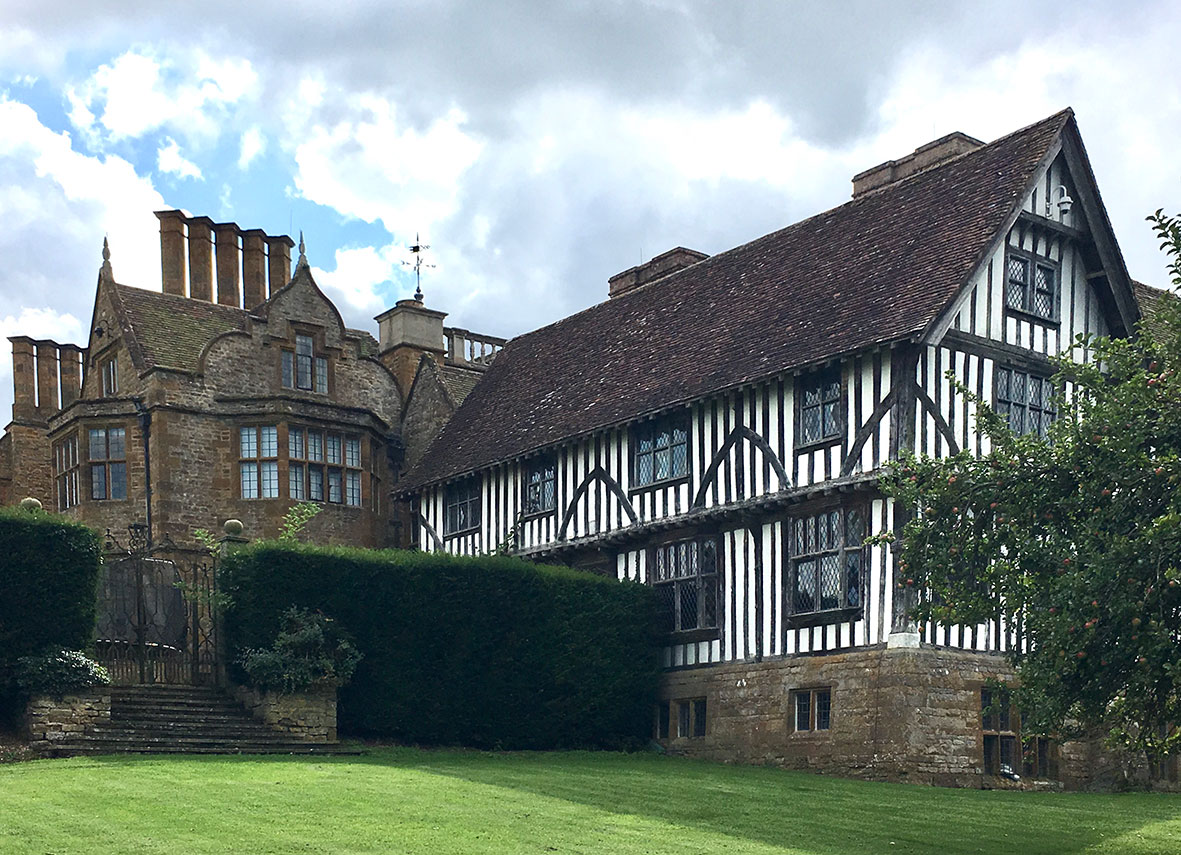Remember, remember the fifth of November. Gunpowder, treason and plot!
Posted 5th November 2020
It is one of the most famous moments in British history, and more than 400 years later it is still a date on the annual calendar with the fireworks displays and burning of the Guy.
The Gunpowder Plot might have been focused on Parliament, but much of the plotting was done much closer to home…
After decades of persecution, English Catholics had reason for hope in 1603; Queen Elizabeth I died and her successor – James I – was said to be much more warmly disposed to them than their Queen had been.
In the Tudor state they were forced to attend Anglican services and forbidden to hear Mass. Anyone refusing to adhere to the rules was fined heavily.
With the more lenient James I in control, Catholics had reason to believe that a turnaround in their fortunes was coming, and at first, it seemed to be.
But the King’s tolerance gave rise to a visible increase in Catholics who were no longer forced to hide their persuasions through fear, and James wasn’t thrilled by their strength in numbers.
Eventually, he shared his ‘utter detestation’ of Catholicism. Priests were expelled and fines for non-attendance of those Anglican services were reintroduced.
The majority of people accepted the return to darker times, and the fine imposition. But not everyone was prepared to tow the line.
Devout Catholic Robert Catesby decided to bring about a permanent change, and an end to the persecution; he assembled a group of conspirators to rid the country of King James I and the Parliament.
Catesby was a devout Catholic from Ashby St Ledgers in Northamptonshire, and he already had form; in 1601 he had been involved in the ill-fated rebellion of the Earl of Essex.
On that occasion he was wounded and imprisoned, but in exchange for a substantial fine Queen Elizabeth I had allowed him to escape with his life.
Nonetheless, the English government quite rightly viewed Catesby as a dangerous character.
Those recruited for his mission included his childhood friend, Francis Tresham of Rushton Hall.

The first meeting to plot out the assassination was held on May 20, 1604, and later they rented an undercroft directly beneath the House of Lords. Everything was set for success, and with Parliament postponed to November 5, 1605, the group of 10 were able to stockpile 36 barrels of gunpowder over several months.
Ashby St. Ledgers’ manor house was used to finalise some of the details of the attack.

When the time came, Guy Fawkes would light the fuse that would change everything before making his escape to Europe.
The plan was revealed with a search of the area following a tip-off. At around midnight on November 4, Fawkes was found in the cellar under the Parliament building.
When he was arrested, Fawkes gave his name as John Johnson and refused to reveal the names of his co-conspirators until torture methods were employed to break his silence.
Learning that Guy Fawkes had been captured, Catesby fled from the capital and made it to Holbeach House in Staffordshire.
Catesby would never be able to pay his way to freedom from this foiled atrocity, and he and his fellow men decided they would die fighting. The same musket ball hit Catesby and co-conspirator Thomas Percy and they both succumbed soon after.
Unlike the others, Francis Tresham didn’t flee London. He was arrested a week later and soon transferred to the Tower of London. His health declined before he could be tried and he died on December 23. Nonetheless, his head was still reunited with those of Catesby and Percy and put on display in Northampton, while his body was thrown into a hole at Tower Hill.
Catesby’s head was later said to have been placed on the roof of the House of Commons!
Another conspirator lived at a significant property little more than a stone’s throw from Newport Pagnell.
As you would expect of a substantial Grade I listed Elizabethan mansion, Gayhurst House is an imposing, incredible looking place, situated in extensive grounds.
Today the property is divided into spacious, special family homes, but it too is intrinsically linked to the foiled plot of 1605.
Fellow conspirator Sir Everard Digby married young heiress Mary Mulsho, whose family owned the property and it became his family home.
Everard was a latecomer to the plot, and when caught and held in the Tower of London he escaped the torture endured by his fellow conspirators. But this early leniency was most certainly not an indication of what would follow.
Everard was the only plotter to plead guilty to the charges and was tried separately, declaring that he deserved ‘the vilest death,’ but asking that in view of his status (he was a Sir after all) that he be beheaded.
That request was denied, and he was afforded a brutal, if common exit; strapped to a wattled hurdle he was dragged by horse to the Old St Paul’s Cathedral, as spectators lined the streets to catch a glimpse of him, and three of his fellow cohorts, on their final journey.
Digby was the first to meet his executioner. He was stripped of all clothing except for his shirt, and hanged for a short time before the rope was cut.
Still conscious, he was then taken to the block where he was castrated and disemboweled before he was decapitated and dismembered and his body bits displayed for all to see.
Decapitation would have been much cleaner after all.
Did you know?
- The iron lantern that Guy Fawkes was believed to be carrying when he was arrested is on display at the Ashmolean Museum in Oxford.
- Up until 1959 it was illegal not to celebrate Bonfire Night in the UK
- We call it The Gunpowder Plot today, but in past centuries it was called the Gunpowder Treason Plot or the Jesuit Treason
- The cellar where Guy Fawkes tried to blow up Parliament was itself destroyed by fire in 1834 – the blaze devastated the medieval Houses of Parliament
- Today, the Palace of Westminster is still ceremonially searched by the Yeoman of the Guard prior to State Opening to ensure a modern day Guy Fawkes isn’t in the cellars.
